Understanding Gold Dollar Values: Expert Insights and Current Trends
Are Gold Dollars Worth Anything? Understanding Their Values: Expert Insights and Current Trends For over two decades, I’ve navigated the intricate world of numismatics, dealing in gold dollar coins and ultra-rare coins for high-net-worth collectors who demand white-glove service. My...
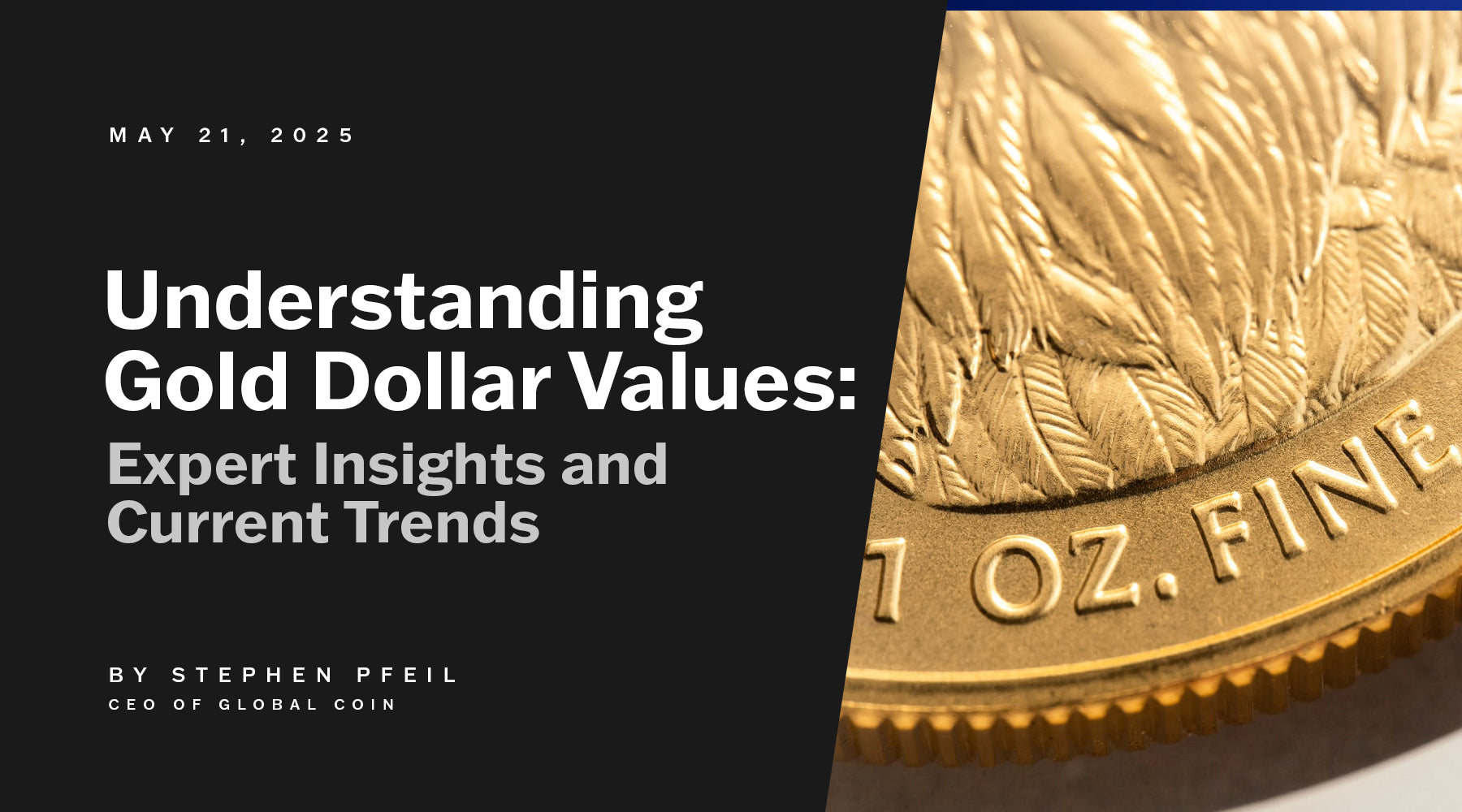
Are Gold Dollars Worth Anything? Understanding Their Values: Expert Insights and Current Trends
For over two decades, I’ve navigated the intricate world of numismatics, dealing in gold dollar coins and ultra-rare coins for high-net-worth collectors who demand white-glove service. My clients—discerning investors and passionate collectors—trust me to source pristine pieces, authenticate rarities, and deliver insights that elevate their portfolios. Gold dollar values are a fascinating blend of history, economics, and artistry, and I’m here to share a 2,500-word deep dive into what drives these tiny treasures, from their historical significance to today’s sizzling market trends. Whether you’re a seasoned collector or new to the game, this guide will arm you with the knowledge to master gold dollar investments.
Join me as we embark on a numismatic journey, exploring, acquiring, and appreciating rare and historic coins that define the collector’s experience.
Introduction to Gold Coins

Gold coins have been a staple of American history, with the first gold dollar coin being minted in 1849. These were among the first coins of their kind produced by the United States Mint. The Coinage Act of 1849, which included the production of the Double Eagle and the Gold Dollar, was created in response to the California Gold Rush. This influx of gold provided the U.S. government with the opportunity to introduce new denominations of gold coinage, including the gold dollar coin. These coins, coined from 1849 to 1889 by the United States Mint, are highly valued by collectors for their rarity, condition, and historical significance.
In 1985, President Ronald Reagan signed the Gold Bullion Coin Act, directing the United States Mint to produce precious metal coins, specifically gold and silver American Eagles, to meet growing investor demand for tangible assets. This landmark legislation, which I recall sparking excitement in the numismatic world, aimed to compete with global bullion coins like South Africa’s Krugerrand, offering Americans a government-backed option for gold and silver investment. The move not only bolstered the Mint’s offerings but also cemented the U.S. as a key player in the global precious metals market, a legacy my high net worth clients still leverage today.
The melt value of gold coins is a crucial factor in determining their worth, with the current market price of gold playing a significant role. As of May 2025, gold prices are approximately $3,308 per ounce, making the melt value of a gold dollar coin around $160. However, the numismatic value of these coins often far exceeds their melt value, driven by factors such as rarity, condition, and historical importance.
Whether you’re a seasoned collector or just starting out, gold coins offer a tangible connection to American history and a valuable piece of bullion. They represent not only a form of currency but also a piece of the nation’s heritage, making them a prized addition to any collection.
The Gold Dollar: A Glimmer of American History
Gold dollars, minted from 1849 to 1889, are small but mighty relics of America’s past. Born during the California Gold Rush, they were authorized by Congress to capitalize on the flood of gold and silver dollar coins from the West. Designed by James B. Longacre, these coins—measuring just 13mm for Type 1—came in three varieties: Type 1 (1849–1854, Liberty Head), Type 2 (1854–1856, Indian Head with smaller head), and Type 3 (1856–1889, Indian Head with larger head). Each type reflects the Mint’s evolving artistry and the era’s economic needs. The phrase ‘United States of America’ is featured on the reverse sides of the coins, and ‘In God We Trust’ appears on the front of the coin.
Weighing 1.672 grams with 90% pure gold, gold dollars were practical for commerce when silver coins were scarce, hoarded, or exported. By the 1870s, paper currency and larger gold denominations like double eagles overshadowed them, but the Mint continued producing proofs for collectors. Different designs were among the coins struck during the period from 1849 to 1889. Coins produced at branch mints like Charlotte and Dahlonega had lower mintage numbers, increasing their rarity. Only a limited number of surviving specimens exist today, as many coins became jewelry or were exported to Asia, reducing the population further. Total mintage reached about 19.5 million, including some coins made from copper with Philadelphia dominating at 18.2 million, followed by New Orleans, Charlotte, San Francisco, and Dahlonega.
Holding a gold dollar, I feel the pulse of a nation chasing prosperity. For my clients, these coins are more than investments—they’re tangible connections to money and history. But what makes them valuable today? Let’s break it down.
Types of Dollar Coins
There are several types of dollar coins, each with its unique characteristics and historical significance. Gold dollar coins, minted from 1849 to 1889, are known for their distinctive designs and mint marks. These coins, created in response to the California Gold Rush, are highly sought after by collectors for their rarity and condition compared to other coins from the same era.
Silver dollar coins, minted from 1794 to 1935, are another popular type of dollar coin. These coins are highly valued for their historical significance and rarity. For example, the 1804 Draped Bust dollar is one of the rarest and most valuable dollar coins, with a value exceeding $1 million.
Copper-nickel clad coins, such as the Eisenhower dollar, represent a more modern denomination of dollar coins. Commonly referred to as dollar coins, these were minted from 1971 to 1978 and are valued based on factors such as mintage, rarity, and condition. Sacagawea dollars, introduced in 2000, are another modern series; they are made of a copper core clad by manganese brass, giving them a golden appearance, but they do not contain real gold and are often mistaken for being made of gold. Additionally, presidential dollar coins, issued from 2007 to 2016 as part of the presidential dollar series, commemorate U.S. presidents and are popular among collectors for their historical significance and unique designs. The presidential dollars highlight American leaders and are a focal point for those interested in numismatic collections and presidential memorabilia.
The value of dollar coins can vary greatly. While most are worth their face value, rare and collectible coins can be worth significantly more. Collectors often seek out coins with low mintage numbers, unique mint marks, and historical significance, making these coins valuable additions to any collection.
What Drives Gold Dollar Values?

Gold dollar values hinge on a mix of measurable factors and the nuanced instincts I’ve honed over decades. The early years of gold dollar production are especially significant, as coins from this formative period often carry higher collector value due to their historical context and scarcity. Evaluating selling options for gold dollar coins requires effort, as attending coin shows, while providing a chance to interact with collectors, demands both time and commitment. For an expert evaluation and to facilitate a smooth transaction, consider consulting a reputable coin dealer who can accurately assess your coin's value and guide you through the selling process. Here’s the blueprint for understanding coin values:
In terms of rarity and mintage, only a limited number of certain rare gold dollars are known to exist, which greatly increases their desirability and value among collectors.
Review expert guidance on how to sell rare coins effectively to gain valuable insights and strategies for maximizing returns.
1. Gold Content and Spot Price
Each gold dollar contains 1.505 grams of pure gold. With gold prices in May 2025 at approximately $3,308 per ounce (down $17.90 on April 17, per GoldDealer.com), the melt value is around $160. This is the baseline—your coin's floor price. However, numismatic value is generally worth more and often dwarfs melt value. A rare coin in top condition can command thousands, driven by collector demand and historical allure, which I carefully assess for my clients.
2. Condition and Grading
Condition is paramount. A worn, circulated coin might hover near melt value, but a pristine MS-70 (Mint State, flawless and in mint condition) is a game-changer. Coins in mint condition are free from wear or damage and are highly desirable to collectors. Using the Sheldon Scale (1–70), grading services like PCGS and NGC set the standard for coins, including the importance of the mint mark. An MS-65 1849 Type 1 gold dollar fetches $1,500–$2,500; an MS-68 can soar to $10,000 or more. I’ve seen clients obsess over a single grade point—it can mean a five-figure difference. Proper storage is non-negotiable; one mishandled coin can plummet in value.
3. Rarity and Mintage
Low mintage drives scarcity, and scarcity drives value. Some gold dollars were produced in small quantities, which increases their rarity and value. The 1861-D gold dollar, minted in Dahlonega under Confederate control with just 1,000 coins during its production, is a prime example: $5,000 in VF-20, $50,000+ in MS-63. Compare that to the 1849 Philadelphia issue (688,567 minted), valued at $300 in VF-20. Errors, like off-center strikes or doubled dies, can transform a common coin into a collector’s dream. I once sourced an 1854 Type 2 error coin for a client, tripling their investment in two years.
4. Historical Significance
Coins tied to pivotal moments—like the Gold Rush or Civil War—carry a premium. The introduction of the gold dollar coin during the Gold Rush is a notable event in minting history. The 1861-D, a Confederate artifact, is a collector's holy grail. Pedigreed coins, especially those featured in auctions from famous hoards or notable owners, also command higher prices. I recently placed an 1855-C gold dollar with a client who valued its tie to Charlotte's early minting history. For high net worth collectors, the story behind the coin is as valuable as the metal. It is also important to note that January 2021 marked the enactment of the Circulating Collectible Coin Redesign Act, a significant legislative action for coin collectors.
5. Collector Demand and Market Trends
Demand ebbs and flows with economic and cultural shifts. In the 1870s, gold dollars were jewelry; today, they're prized for numismatic sets. Online platforms like Heritage Auctions and eBay reveal real-time trends in the act of buying and selling coins. As mentioned earlier, the value and production of dollar coins play a significant role in these trends. An 1889 gold dollar in MS-65, worth $2,500 in 2023, now approaches $3,000 due to surging interest. Economic uncertainty—think stock market dips or inflation fears—pushes collectors toward gold, a trend I leverage to secure top-tier coins for my clients.
Face Value vs. Collector Value
When it comes to dollar coins, understanding the difference between face value and collector value is crucial for anyone entering the world of coin collecting. The face value of a dollar coin is straightforward—it’s the denomination stamped on the coin, typically $1 for coins like the Sacagawea dollar or Presidential dollar. This is the amount you could spend in everyday transactions, and for most modern dollar coins, such as those found in circulation, their value rarely exceeds this amount.
However, the collector value of a dollar coin can be dramatically higher, depending on factors like rarity, condition, and historical significance. For instance, while a common Sacagawea dollar or Presidential dollar might only be worth its face value, a rare coin like the 1794 Flowing Hair Dollar has fetched millions at auction due to its status as one of the rarest and most historically significant coins in American history. Collectors are always on the lookout for coins with low mintage numbers, unique features, or ties to pivotal moments in history, as these attributes can elevate a coin’s value far beyond its face value.
When deciding whether to buy, sell, or hold onto a dollar coin, it’s essential to assess whether its worth lies in its face value or if it possesses the rarity and collector appeal that can command a premium in the marketplace. This distinction is at the heart of successful coin collecting and investing, helping collectors make informed decisions and maximize the value of their collections.
Navigating the Market with Precision
Dealing in rare coins for high-net-worth individuals requires a blend of cunning and expertise. My white-glove service ensures every transaction is seamless, from authentication to delivery. Here’s how I operate in the gold dollar and new dollar coin market:
-
Vetting Authenticity: Fakes are a constant threat. I once inspected a supposed 1856-D gold dollar—wrong font, mushy details. Using tools like a loupe and digital scales (coins must weigh 1.672 grams), I verify mintmarks, edges, and strike quality. Notably, coins from the Denver Mint, Philadelphia Mint, San Francisco Mint, and Orleans Mint can carry significant rarity and value, so I pay close attention to their origins. For clients, I only source PCGS- or NGC-graded coins, guaranteeing authenticity and peace of mind. When distinguishing valuable gold dollars from common coins, remember that authentic gold dollars are smaller than a dime; coins larger than a dime are typically worth face value only.
-
Strategic Acquisition: At auctions or private sales, I negotiate with precision. The PCGS Price Guide is my bible—$300 for a VF-20 1849? I’ll start at $250, knowing market dynamics. A 2007 Heritage sale saw an 1855-O MS-63 sell for $9,200; today, it’s $12,000. I track these shifts to secure coins at optimal prices for my clients. Coins with unique coin features, such as high relief or distinctive reverse features, often command premium prices, especially when produced at notable mints like the San Francisco Mint or Orleans Mint.
-
Maximizing Returns: For clients looking to flip, I target undervalued coins. In 2015, I acquired 10 circulated 1853 gold dollars at $200 each (gold at $1,200/oz). Sold in 2024 for $400 each, doubling the investment. Timing matters—gold price spikes often boost common-date coins, a strategy I use to enhance portfolio performance. Coins with exceptional reverse features or high relief designs, especially from the Denver Mint or Philadelphia Mint, can yield higher returns due to their collectible appeal.
-
Steering Clear of Hype: Social media on platforms like X can inflate prices temporarily. A 2024 thread hyped 1874 gold dollars, spiking prices 20% before a crash. I advise clients to focus on fundamentals—rarity, grade, and long-term demand—ensuring their investments hold value. When evaluating modern golden dollar coins, keep in mind that unless they are made of actual gold and are smaller than a dime, they are generally worth face value.
When it comes to error coins, I pay special attention to rare varieties such as those with missing edge lettering, especially from the Philadelphia Mint, and the presence or absence of the motto 'E Pluribus Unum,' as these errors can significantly increase a coin's rarity and value.
As a leading private retailer of collectible coins, I emphasize my independence from the U.S. government and the U.S. Treasury. This distinction builds trust with collectors, highlighting my authority and expertise in the realm of currency and coinage.
Coin Authentication: Ensuring Genuine Value
In the world of coin collecting, authentication is the foundation of trust and value. With the increasing sophistication of counterfeiters, verifying the authenticity of a dollar coin is more important than ever. One of the first steps in authentication is examining the coin’s mint mark—a small letter or symbol that reveals where the coin was struck. For example, coins from the San Francisco Mint bear an “S” mint mark, while those from the Philadelphia Mint often have no mint mark at all. These subtle details can make a significant difference.
Buying and Selling Gold Coins

Buying and selling a gold coin can be a lucrative endeavor, but it requires a thorough understanding of the market and the value of the coins. The prices listed for gold coins can vary based on factors such as condition, rarity, and demand. Therefore, conducting thorough research before making a purchase or sale is essential.
Heritage auctions are an excellent platform for buying and selling gold coins, offering a wide range of coins and a secure environment for transactions. When purchasing gold coins, it is crucial to verify their authenticity and condition. This includes checking the melt value, ensuring the coin’s weight and dimensions are accurate, and looking for certifications from reputable organizations like the NGC or PCGS.
Proceeding with caution and due diligence can help you make informed decisions when buying and selling gold coins. Understanding the history and production of gold coins, such as the Coinage Act and the role of the U.S. Mint, can also enhance your appreciation of these valuable pieces.
By taking the time to learn about gold coins and the market, you can make smart decisions and build a valuable collection. The market for gold coins often differs from that of paper money, as each has unique factors influencing collectibility and value, such as coin age and minting era for gold coins, and serial numbers or printing errors for paper money. Whether you are a seasoned collector or a newcomer, understanding the intricacies of buying and selling gold coins can help you navigate this fascinating market with confidence.
Building a Gold Dollar Collection with Care
For my clients, collecting gold dollars is about legacy, not just profit. My role is to curate collections, including one-dollar and gold dollar coins, that reflect their passions while safeguarding their wealth. Here’s my approach:
-
Starting Wisely: You don’t need millions to begin. A Fine-12 185. A circulated 1851 gold dollar costs $250–$300. I guide clients toward common dates (1849–1853) to build confidence. Membership in the American Numismatic Association offers access to exclusive auctions and dealer networks, which I leverage for sourcing. Some dollar coins, like the Sacagawea dollar, contain an outer layer of manganese brass, giving them a distinctive golden appearance.
-
Mastering the Types: Type 1 coins (1849–1854) are budget-friendly with bold relief. Type 2 (1854–1856) are scarcer (1.8 million minted) due to design issues. Type 3 (1856–1889) offer the best strikes and surviving examples. I help clients choose a type to complete a set, balancing cost and rarity. When evaluating coin design and value, special attention should be paid to the obverse side, as it often features the main portrait and key design elements that define a coin’s appeal.
-
Grading for Value: I insist on PCGS or NGC grading for resale and authenticity. An ungraded “MS-65” from an unverified source could be an AU-58, halving its value. I learned this lesson in ‘98, losing $1,000 on a counterfeit slab—a mistake I never repeated. Gold dollar coins in uncirculated conditions hold greater numismatic value compared to circulated or worn coins.
-
Diversifying Portfolios: I recommend pairing gold dollars with other numismatic assets, like Morgan dollars or commemorative coins. The Lincoln cent is another classic collectible featuring a U.S. president, valued for its historical significance and popularity among collectors. If gold prices dip, numismatic value can stabilize returns. A diversified collection is a resilient one.
-
Staying Informed: I study the “Red Book,” NGC Price Guide, and Stack’s Bowers auctions. PCGS CoinFacts is my go-to for trends. In 2022, I anticipated a surge in 1880s gold dollars, buying low and selling for a 30% profit in 2025. Knowledge is power.
Current Trends in Gold Dollar Values
In May 2025, the gold dollar market is thriving. Key drivers include, as discussed on this page :
-
Gold Price Boom: At $3,308/oz (up $67 on April 11, per GoldBroker.com), melt values are climbing. Circulated gold dollars that fetched $150 in 2020 now sell for $200–$250, boosting entry-level appeal.
-
Collector Surge: Online platforms have democratized collecting, driving demand. Type 2 coins, like the 1855-C (mintage 9,803), are soaring—MS-63 examples hit $15,000, up from $10,000 in 2023.
-
Error Coin Mania: Errors are red-hot. A 2000 Sacagawea dollar mule with a quarter obverse sold for $192,000 in 2018. Gold dollar errors, like an 1854 off-center strike, can fetch $10,000+. I recently placed one with a client, cementing their collection's prestige. Sacagawea coins are commonly valued at one USD, but they might have slight premium values in certain conditions. Zinc is part of a multi-metal alloy that comprises various denominations of these coins.
-
Economic Uncertainty: With markets volatile, gold dollars are a safe haven. High net worth clients are snapping up MS-65+ coins, pushing prices higher. An 1881 proof gold dollar in PR-65 hit $20,000 last month, a 25% jump from 2022.
Tax Implications and Costs

For U.S. collectors, gold dollars are classified as collectibles, taxed at a 28% rate for gains on coins held over a year. Short-term gains follow income tax rates. I advise clients to consult tax professionals to optimize strategies. Fees—storage, grading, and auction premiums (15–20%)—can erode returns, so I negotiate to minimize costs. For high-value coins, secure storage (e.g., bank vaults or third-party depositories) is essential, with annual fees of 0.5–1% of value.
Making Informed Decisions
Investing in gold dollars requires clarity and caution. I work closely with clients to align purchases with their goals—wealth preservation, legacy building, or speculative gains. Understanding risks (counterfeits, market swings, liquidity) is critical. I provide tailored advice, often collaborating with financial advisors to ensure holistic strategies. By focusing on authenticated, high-grade coins, including common date options, and monitoring trends, I help clients build collections that endure.
Summary
Gold dollars are a unique blend of history, art, and investment potential. From their Gold Rush origins to today's vibrant market, gold coins like gold dollars offer diversification, inflation protection, and prestige for high-net-worth collectors. Whether you choose common-date coins, rare errors, or proof sets, my white-glove service ensures every acquisition is strategic and seamless. By understanding gold content, grading, rarity, and trends, you can navigate this market with confidence, building a collection that shines for generations.
Frequently Asked Questions
What drives gold dollar values?
Values stem from gold content ($160 melt value at $3,308/oz), condition (MS-65 vs. VF-20), rarity (e.g., 1861-D, 1,000 minted), historical significance, and the coinage act's influences on collector demand.
How do I start collecting gold dollars?
Begin with affordable coins commonly referred to as one dollar, like an American Gold Eagle or Canadian Maple Leaf. Use PCGS/NGC-graded coins, join the ANA, and consult trusted dealers for guidance.
What are the tax implications?
In the U.S., gold dollars are collectibles, taxed at 28% for long-term gains. Short-term gains follow income tax rates. Consult a tax advisor.
How do I avoid counterfeits?
Buy PCGS- or NGC-graded coins and check the reverse for authenticity. Verify weight (1.672 grams), diameter, and mintmarks. Work with reputable dealers offering white-glove service.
Why invest in gold dollars now?
With gold at $3,308/oz and collector demand surging, gold dollars offer stability and growth. Rare coins like the 1855-C or 1861-D are appreciating fast, making 2025 a prime time to invest.
Related Articles
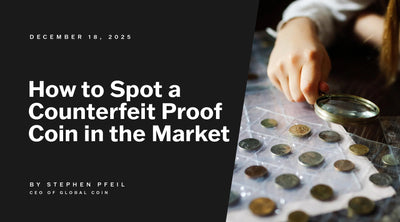
How to Spot a Counterfeit Proof Coin in the Market
How to Spot a Counterfeit Proof Coin in the Market In the world of numismatics, few things hold ...
Discover More
BREAKING NUMISMATIC NEWS: Large batch of 2025 Marine Privy Coins MELTED by U.S. Mint
BREAKING NUMISMATIC NEWS: Large batch of 2025 Marine Privy Coins MELTED by U.S. Mint A historic ...
Discover More
Tax Implications When You Sell Gold Bullion in Different States
Disclaimer: The following content is for informational purposes only and should not be construed ...
Discover More

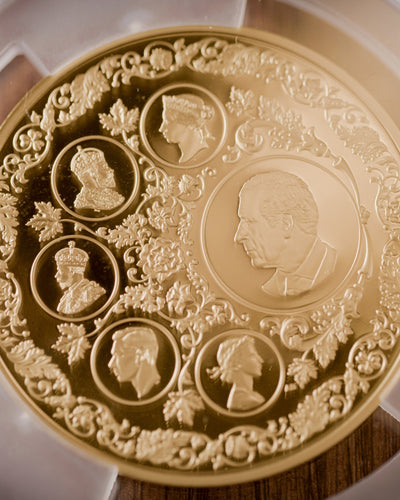
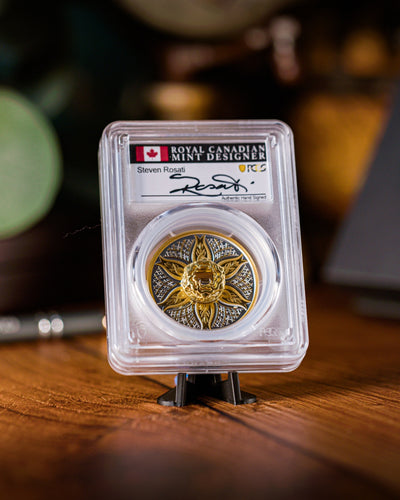
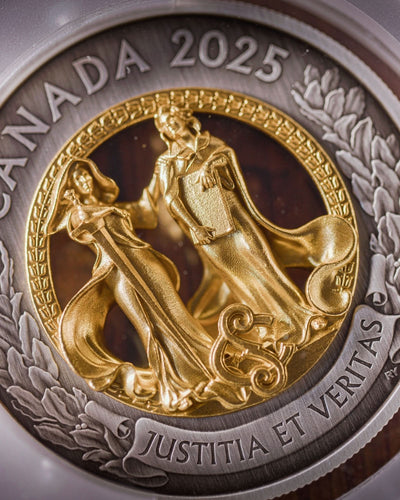
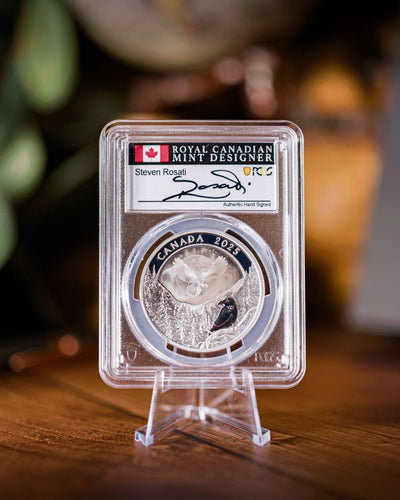
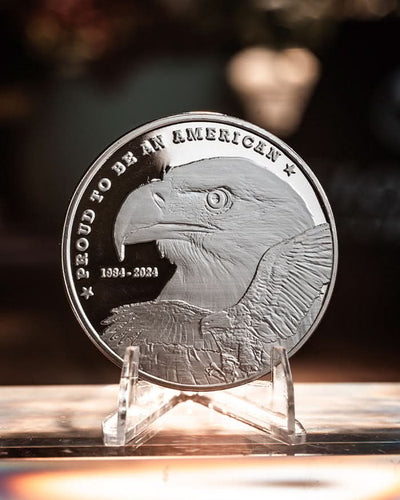
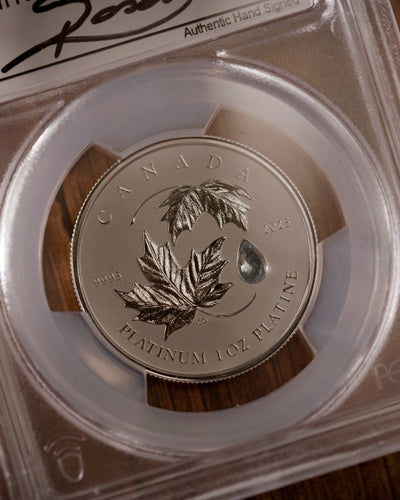
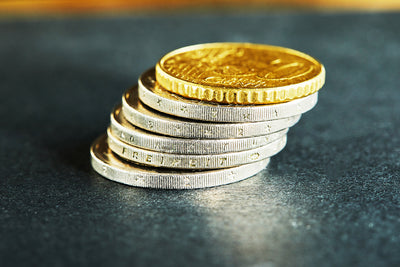
Leave a comment
This site is protected by hCaptcha and the hCaptcha Privacy Policy and Terms of Service apply.